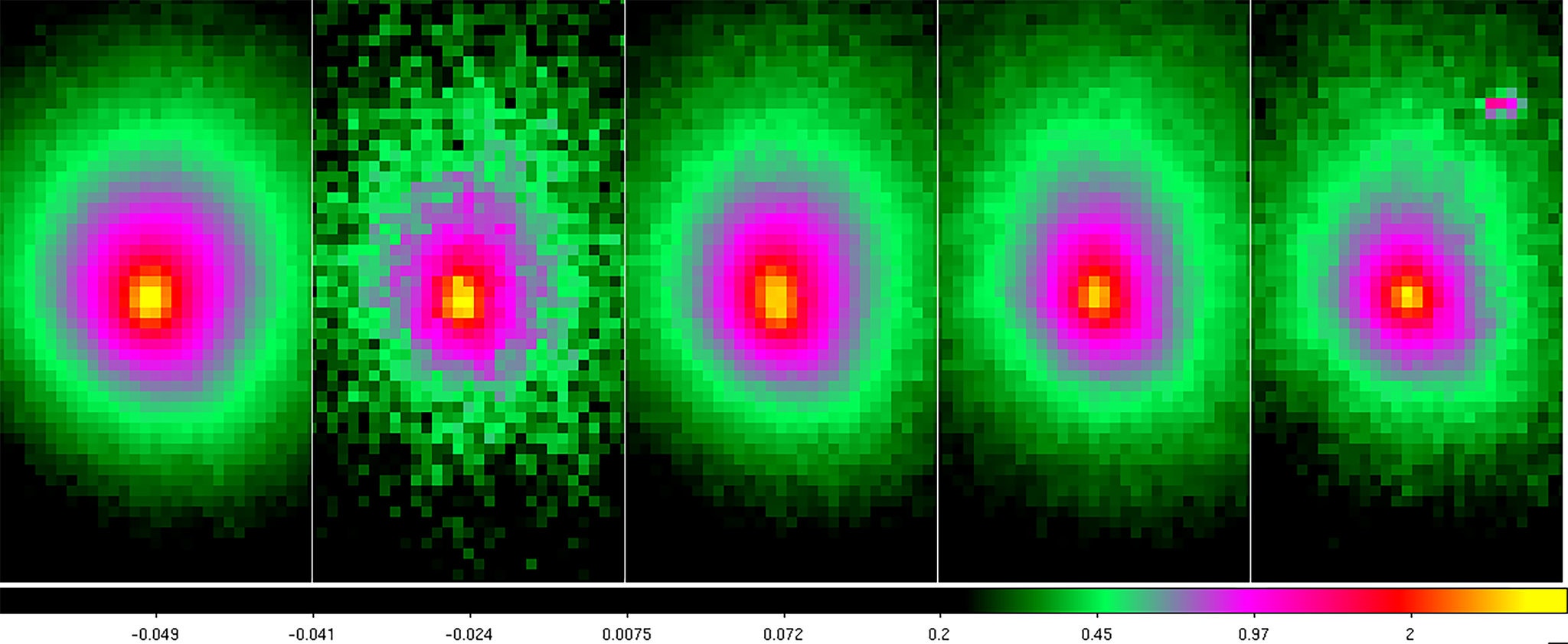Comet 2I/Borisov is the first interstellar comet and only the second interstellar object ever found in our solar system. And, now, it's breaking up. EPSS's Dr. David Jewitt leads a team that showed this process in action.

From left, the comet observed on March 23, 28, 30, April 3 and 6. The colors are false to distinguish the bright area around the comet’s nucleus (yellow), coma (pink), and tail (green). The nuclear region appeared significantly elongated on March 30 (center panel), indicating fragmentation of the nucleus. Photo Credit: Max Mutchler/STScI and Dave Jewitt/UCLA
From the New York Times:
The clincher came on March 30, when a group led by Dr. David Jewitt at the University of California, Los Angeles, downloaded a fresh image taken by Hubble. Instead of just a circular blob that would show the comet’s nucleus, they saw an elongated shape, suggesting a smaller fragment of the nucleus had split off and was slowly drifting away from the main object. "It’s like a little lug nut dropped off your car," Dr. Jewitt said.
...
These outbursts may have increased the comet’s rotation speed, resulting in the subsequent fragmentation that has now been observed. "If the nucleus spins itself up because of these outgassing torques, it can spin so fast that it basically flies apart," Jewitt says. "We can calculate the gravitational escape speed for this nucleus, and we can guess the density to be like other comets. The test of that will come in the future—if we ever get to see the nucleus without dust around it."
From Space.com:
These two pieces are about equally bright, but that doesn’t mean they’re of equivalent size, said UCLA astronomer David Jewitt, who led the new observations. “Actually, it turns out almost never to be that case,” Jewitt told Space.com, referring to similar observations of native-born comets. “Usually, the main nucleus drops off a piece, and the piece is small compared to the main nucleus — it contains a tiny fraction of the total mass,” he said. “But, because it was just plucked out of the nucleus, it’s pretty icy. And the ice fizzes and sublimates like crazy, making it a good producer of dust.”
Read more:
New York Times: https://www.nytimes.com/2020/04/07/science/comet-borisov-break-up.html
Space.com: https://www.space.com/interstellar-comet-borisov-two-pieces.html
Scientific American: https://www.scientificamerican.com/article/covid-19-shutdown-may-obscure-mysteries-of-cracked-interstellar-comet/
UCLA In the News: https://newsroom.ucla.edu/in-the-news/ucla-in-the-news-april-7-2020
